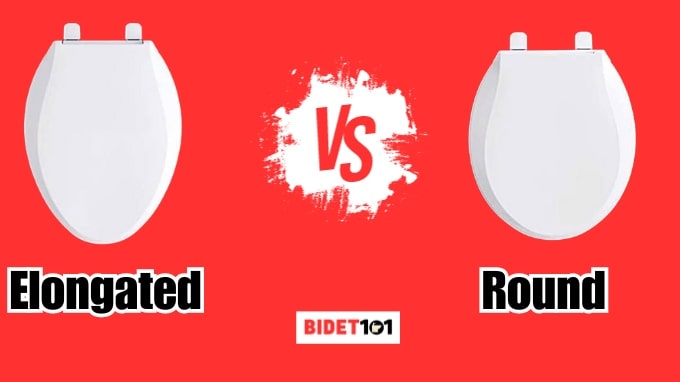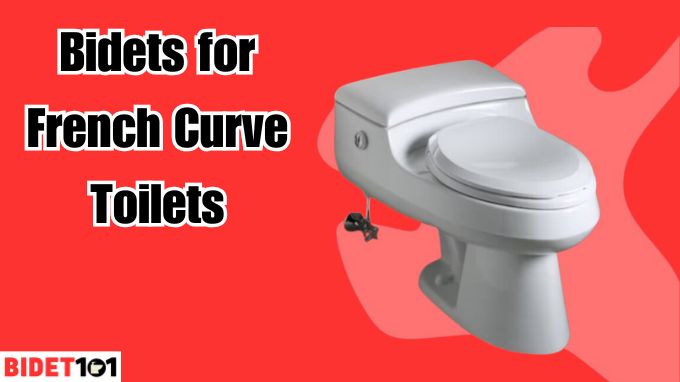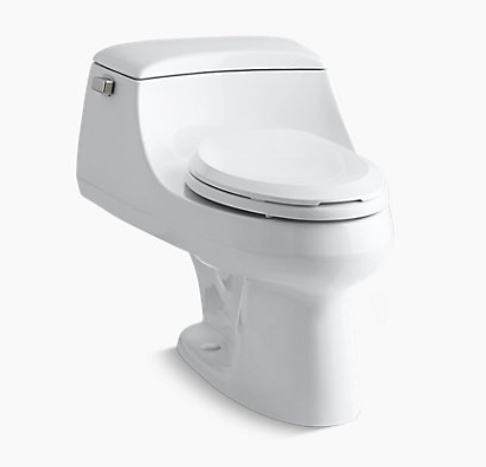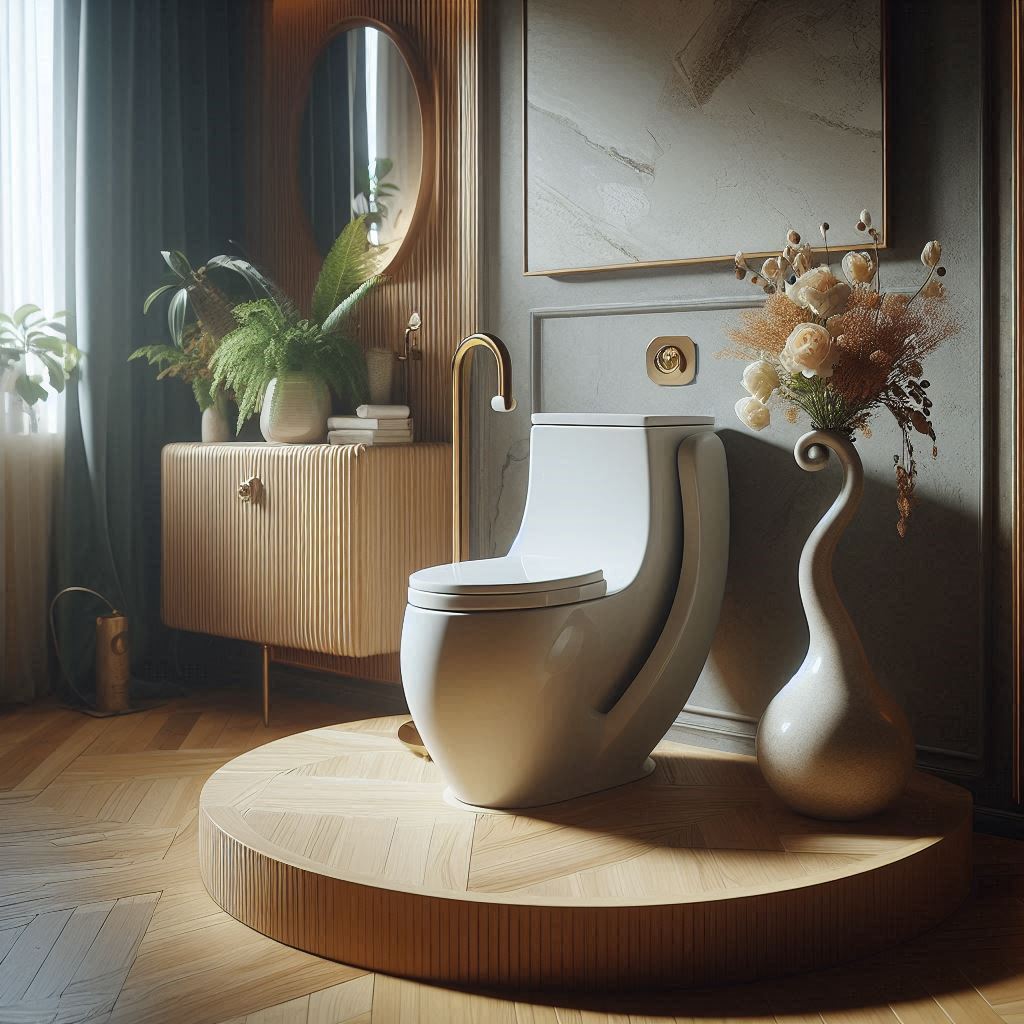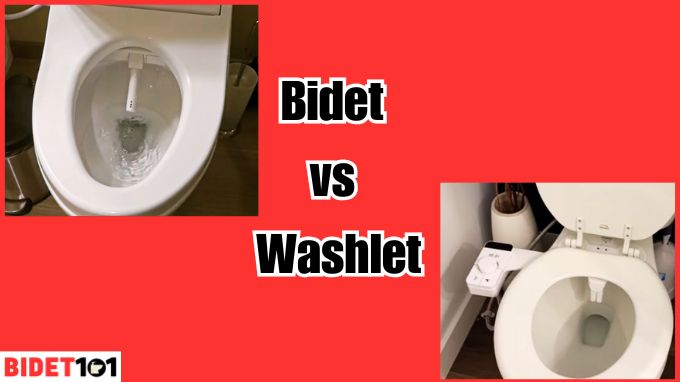Imagine this scenario: You spill a bit of coffee on your hand. What’s the first thing you do? You wash it off, right? It’s a natural reaction because we’ve been taught from an early age that cleanliness is important. But now, let’s switch gears and talk about another part of your body – your bottom. If you got something on your arm, you wouldn’t just wipe it with dry paper, would you? No, you’d wash it with water. It’s simple logic.
Now, let’s delve into an intriguing question: Why don’t Americans use bidets? It’s an everyday item for millions around the world, yet it’s conspicuously absent in most American bathrooms. In this article, we’re about to explore this enigma. We’ll uncover the historical twists and turns, cultural influences, and even wartime associations that have led to this peculiar phenomenon.
But this isn’t just about bathroom habits; it’s about understanding how cultures and traditions shape our choices. So, stick around as we embark on this journey to uncover why bidets are still a rarity in American households. It’s a story worth exploring because, at its core, it’s about something we all care deeply about – personal hygiene.

Historical Context:
To understand why bidets never gained widespread popularity in the United States, we need to rewind the clock and explore their origins. The term “bidet” itself is French, literally meaning “small pony.” The name is quite fitting when you consider how early bidets were used. Imagine straddling your legs over a small basin and using your hands to scoop water for personal hygiene – it was a bit like riding a pony.
These early bidets were a luxury reserved for royalty and the upper class in France. They were symbols of opulence and refinement. However, things started to change in the 19th century with the advent of indoor plumbing. Bidets became more accessible to the general population, and their use began spreading beyond France to other parts of Europe and even to Eastern Asia, the Middle East, and South America.
Fast forward to modern times, and bidets are a common sight in many countries, with Japan being a prime example. In Japan, electric bidets with various wash settings and even built-in dryers are the norm. Astonishingly, approximately 80% of all bathrooms in Japan are equipped with bidets.
So, with bidets being embraced around the world, what kept them from becoming a fixture in American bathrooms? The answer to this puzzle takes us back to early American history and the influence of British culture, but it also involves some unexpected twists during World War II. Let’s dive deeper into these historical events in the following sections to unravel the mystery of why Americans don’t use bidets.
Bidets in Global Culture:
Before delving into why bidets didn’t catch on in the United States, it’s crucial to acknowledge their widespread acceptance and significance in global cultures. Bidets have been an integral part of personal hygiene routines in numerous countries for centuries, proving their effectiveness and comfort.
Europe:
In Europe, bidets found their first home. France, where the term “bidet” originated, embraced these devices as early as the 17th century. Initially reserved for the nobility, bidets eventually became fixtures in many French households. The French valued cleanliness and refinement, and bidets symbolized both.

Image source: Wikipedia
Japan:
Japan is renowned for its advanced bidet technology. Electric bidets, often referred to as “washlets,” are incredibly popular. These high-tech toilets offer heated seats, adjustable water temperature, variable water pressure, and even warm air drying. Nearly every household in Japan boasts one of these sophisticated bidet toilets, contributing to a clean and eco-friendly bathroom experience.
South America:
Countries like Venezuela and Argentina have enthusiastically embraced bidets. Bidet fixtures are common in homes and public restrooms. South Americans appreciate bidets for their refreshing and hygienic qualities.
Middle East:
Bidets are also prevalent in Middle Eastern countries, where they align with Islamic traditions of cleanliness. They’re often used alongside traditional practices like the “lota” or “istinja,” demonstrating the flexibility of bidets in various cultural contexts.
These examples highlight how bidets have seamlessly integrated into the daily routines of people across the world. They’ve earned a reputation for promoting cleanliness, comfort, and environmental sustainability. With bidets being a global norm, the question remains: Why did they not find a similar place in American culture? To answer this, we need to explore the historical roots of bidet usage in the United States.
The American Connection:
To comprehend why bidets never gained widespread acceptance in the United States, it’s crucial to explore the historical ties and influences that have shaped American bathroom habits.
Colonial Origins:
America’s history is deeply intertwined with its colonial past. As British colonists settled in the New World, they brought with them customs and traditions that shaped early American culture. In the 18th century, Britain’s upper class adopted bidets from France as a symbol of luxury and refinement. When British colonists established the American colonies, they carried these preferences with them. Thus, bidets became associated with the elite and were not part of the daily routines of ordinary Americans.
Cultural Legacy:
The American bidet aversion persisted through the centuries, stemming from a cultural legacy that prioritized alternative methods of personal hygiene. Americans developed a strong preference for using toilet paper as the primary means of post-toilet cleansing. This choice was largely influenced by cultural factors, advertising, and the convenience of toilet paper.
World War II Stigma:
Bidets had a brief encounter with American culture during World War II. U.S. soldiers stationed in Europe encountered bidets in various forms, primarily in brothels. This association with the sex industry tainted the bidet’s image in the minds of many American servicemen. They returned home with a skewed perception, viewing bidets as devices associated with immorality rather than cleanliness. This stigma further discouraged bidet adoption.
Toilet Paper Dominance:
During the mid-20th century, the American bathroom industry experienced a surge in toilet paper production and promotion. Toilet paper became a symbol of modernity and convenience, and the advertising campaigns of major manufacturers solidified its status as the norm for post-toilet hygiene. The perception was that toilet paper was not only sufficient but also superior to bidets.
In summary, the historical connection between America and bidets has been marked by a lack of exposure, cultural preferences, and misunderstandings. Americans, for the most part, never adopted bidets as part of their bathroom routine, opting instead for toilet paper. This deep-seated preference, coupled with marketing and wartime associations, has contributed to the enduring absence of bidets in American bathrooms.
Check out this post to get details about which is better between a bidet and toilet paper. Bidet vs Toilet Paper
Changing Perceptions:
While the wartime introduction of bidets left a mark on American soldiers, perceptions about bidets started to evolve as the world changed around them.
The Post-War Era:
In the post-World War II era, American soldiers returned home, bringing back not just memories of the war but also a newfound familiarity with bidets. However, this familiarity was often associated with the perceived moral ambiguity of brothels where bidets were encountered.
The Rise of Consumer Culture:
The mid-20th century witnessed significant changes in American culture. As the country experienced economic prosperity and technological advancements, consumer culture thrived. Home appliances and gadgets became a symbol of modern living. Yet, amid this surge in innovation, bidets faced a peculiar challenge.
The Convenience of Toilet Paper:
Toilet paper had firmly established itself as the go-to method for personal hygiene after using the toilet. It was widely available, inexpensive, and familiar to Americans. The convenience and low cost of toilet paper made it the default choice for maintaining cleanliness after using the bathroom.
The Bidet’s Uphill Battle:
Bidets faced an uphill battle in gaining acceptance in American households. The negative wartime association lingered, and the cultural preference for toilet paper remained unshaken. Many Americans viewed bidets as unnecessary luxuries or strange fixtures with a tainted past.
A Slow Shift:
Despite these challenges, there was a gradual shift in perceptions. Some Americans, particularly those who had traveled and experienced bidets in other parts of the world, began to appreciate their hygienic benefits. They saw bidets as a more effective and environmentally friendly way to maintain personal cleanliness.
Bidet Advocates:
Over the years, bidet advocates and enthusiasts worked to dispel misconceptions and promote the use of bidets in the United States. They emphasized the environmental advantages of using less toilet paper and the superior hygiene offered by bidets.
Modern Trends:
In recent years, bidet attachments and fixtures have gained popularity in the American market. Their adoption has been driven not only by a growing awareness of hygiene but also by concerns about sustainability and environmental impact.
In conclusion, changing perceptions about bidets in America have been influenced by cultural factors, historical events, and evolving attitudes toward hygiene. While bidets faced initial resistance, the 21st century has seen a gradual shift in favor of these hygienic fixtures.
Conclusion: Embracing Bidets for a Cleaner Future
In the journey of understanding why bidets aren’t as prevalent in America as in other parts of the world, we’ve uncovered a tapestry of historical, cultural, and practical factors. Bidets, initially associated with luxury and then with wartime indulgence, faced an uphill battle in gaining acceptance among Americans.
However, times are changing. As the world becomes more conscious of sustainable living and personal hygiene, bidets are finding their place in American bathrooms. The convenience of bidet attachments, which can be easily installed on existing toilets, is contributing to their rising popularity.
Personal Recommendation: A Cleaner Choice for the Future
Considering the environmental impact of excessive toilet paper use, the superior hygiene bidets offer, and the evolving cultural perceptions, it’s worth giving bidets a try. They are a cleaner, greener, and more hygienic choice for personal hygiene after using the toilet.
If you’ve never experienced the comfort and freshness of bidets, consider installing a bidet attachment in your bathroom. It’s a small change that can make a significant difference in your daily life and contribute to a more sustainable future.
Incorporating bidets into American bathrooms may take time, but the journey toward a cleaner and more environmentally friendly future has already begun. By embracing bidets, we not only improve our personal hygiene but also reduce our ecological footprint—one wash at a time.
Source:
- https://en.wikipedia.org/wiki/Bidet
- https://www.thelocal.fr/20230217/why-are-the-french-falling-out-of-love-with-the-bidet
FAQs
In which countries are bidets commonly used?
Bidets are prevalent in various countries, including:
Japan: Bidets are highly popular and technologically advanced in Japan, where they are found in most households and public restrooms.
France: The bidet originated in France and remains a common fixture in French bathrooms.
Italy: Bidets are commonly found in Italian households and hotels, promoting good hygiene practices.
Portugal: Bidets are widely embraced in Portugal, and many homes have them as standard bathroom fixtures.
Many Asian Countries: Bidets are commonly used in several Asian countries, such as South Korea and Japan, where advanced bidet features are often found.
Middle East: Bidets are frequently used in Middle Eastern countries like Saudi Arabia and the United Arab Emirates.
Why are bidets popular in Asia?
Bidets, specifically bidet showers, have gained popularity in Asia for their effectiveness in maintaining hygiene after using the toilet. In many Asian cultures, it’s customary to use water for cleansing after defecation instead of, or alongside, toilet paper. This practice is prevalent in Muslim countries across the Arab world and various parts of Asia. The bidet shower provides a more thorough and refreshing cleansing experience, which aligns with cultural preferences and hygiene traditions in these regions.

